테프 가루로 집에서 인제라 만들기
1 시간 읽음 100% 테프 가루로 집에서 전통 인제라를 마스터하세요— 스타터 기초, 발효 시기, 반죽 팁, 그리고 푹신하고 시큼한 납작빵을 만드는 조리법. 10월 12, 2025 18:10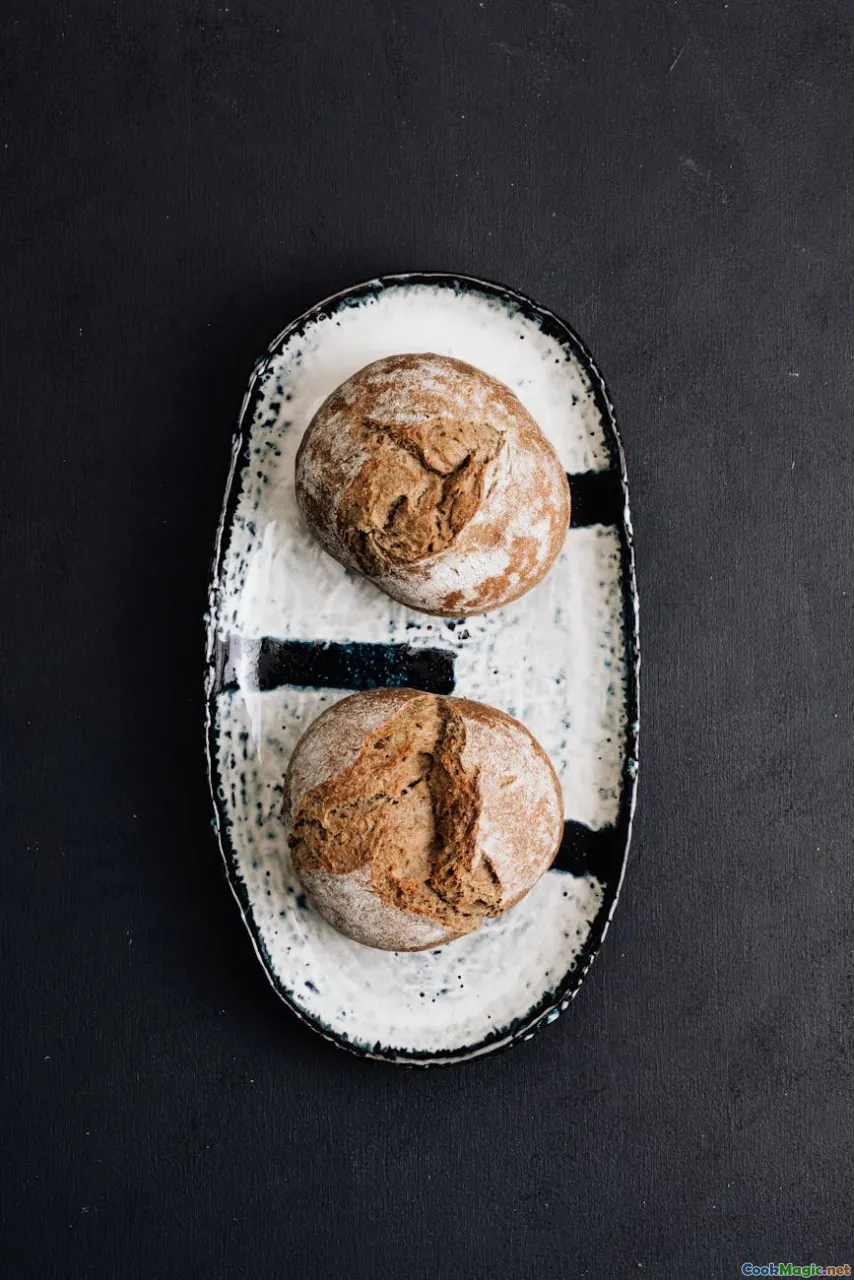
The first time I smelled fermenting teff, I was in a sunlit kitchen in Addis Ababa, the city still blue with dawn. The bowl on the counter breathed like a small animal. It exhaled a gentle sourness laced with toasted hay and cocoa, a scent that made me think of warm bark and rain-damp stone. A woman named Almaz pulled a cloth aside with the solemnity of a ceremony and touched the batter with the back of her spoon; it sighed and settled. Later, when she poured the batter in a spiral onto the hot mitad, the surface opened into hundreds of tiny eyes, as if the bread itself were waking. She covered it, steam whispering around the lid, and in a minute lifted a disk big as a drum skin: a moon of bread, freckled and plush, perfumed with acidity and grain.
테프의 발효 냄새를 처음 맡았을 때, 나는 에티오피아의 수도 아디스아바바의 햇살 가득한 부엌에 있었고 도시의 새벽빛은 아직 파랗게 남아 있었다. 카운터 위의 그 그릇은 작은 동물처럼 숨을 쉬고 있었다. 그것은 은은한 시큼함을 내뿜었고, 구운 건초와 코코아의 향이 어울려 빛나는 나무 껍질과 비에 젖은 돌의 온기를 떠올리게 했다. 알마즈(Almaz)라는 여인이 의례의 엄숙함으로 천을 살짝 옮겨 반죽의 뒷면을 숟가락으로 만지자, 그 반죽은 숨을 쉬며 가라앉았다. 나중에 그녀가 그 반죽을 미다드의 뜨거운 표면에 나선형으로 부었을 때, 표면은 수백 개의 작은 눈으로 벌어졌다. 빵 자체가 깨어나는 듯 보였다. 그녀는 그것을 덮었고, 뚜껑 주위로 김이 속삭였으며, 1분쯤 지나자 북처럼 큰 두께의 원반을 들어 올렸다: 한 달의 빵, 점처럼 무늬를 지니고 촘촘하며, 산미와 곡물의 향으로 가득 찼다.
Making injera at home with teff flour is not just an act of cooking; it is participation in a living tradition. You learn to read a batter the way you read mood on a friend’s face—by scent, small bubbles, how the batter tears or yields. You taste history in its tang. You hear the soft sizzle as the first bubbles surface on hot metal. Injera is a bread, yes, but also a plate, a utensil, and a communal gesture. When you eat it, you tear it with your fingers, scoop stew, and hand a bite—gursha—to someone you love. That is what this bread knows how to hold.
테프 가루로 집에서 인제라를 만드는 것은 단순한 요리 행위가 아니다; 살아 있는 전통에 참여하는 것이다. 향으로, 작은 기포로, 반죽이 찢어지거나 늘어지는 방식으로 반죽의 상태를 읽는 법을 배운다. 그 산미에서 역사를 맛본다. 뜨거운 금속 위로 처음 거품이 표면으로 솟아오를 때의 지글거림을 듣는다. 인제라는 빵이기도 하지만 접시이자 식기이자 공동의 몸짓이기도 하다. 먹을 때 손가락으로 찢고 스튜를 떠서 사랑하는 사람에게 구르샤를 건네준다. 이것이 이 빵이 지니고 있는 모든 것이다.
What injera is and why it matters
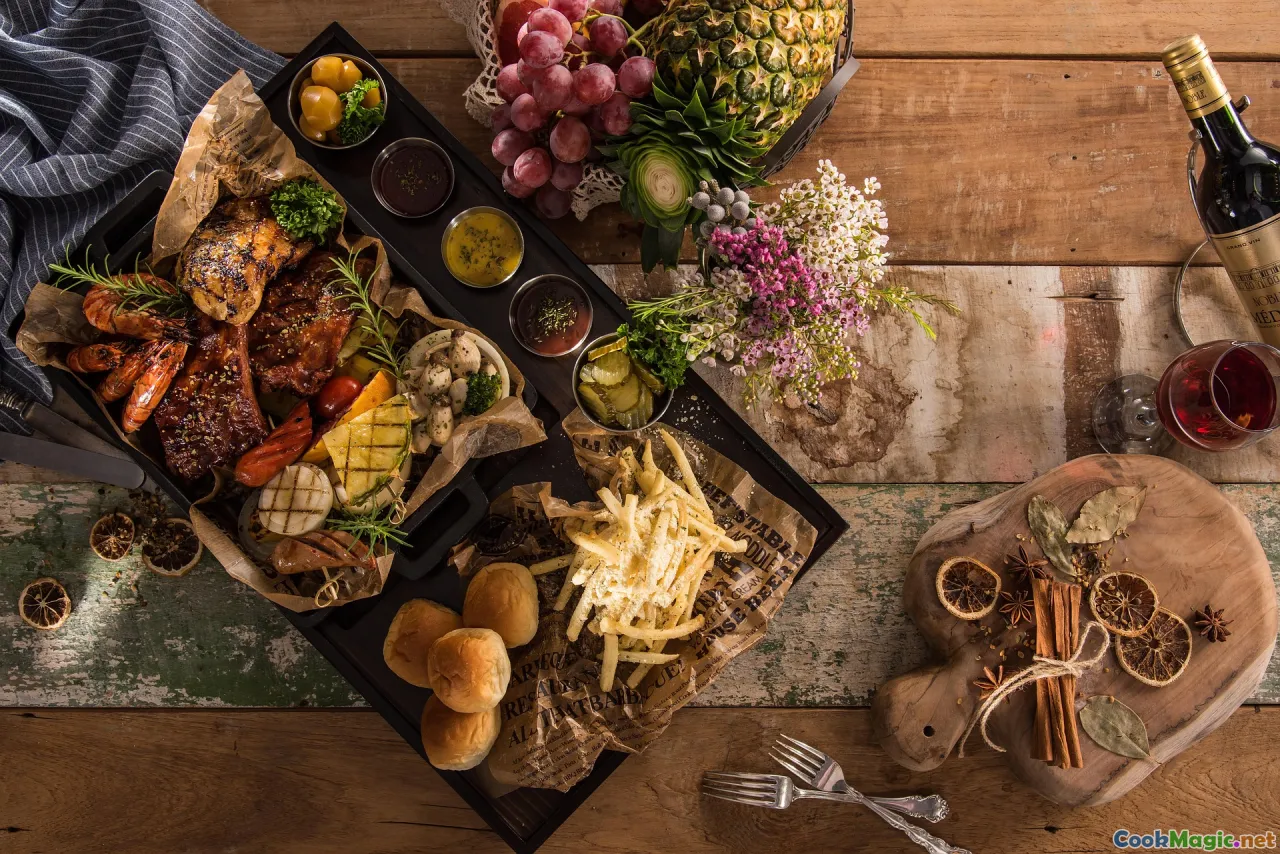
Injera is the sourdough flatbread at the heart of Ethiopian and Eritrean cuisine. It is soft and springy, subtly sour, and riddled with tiny craters called eyes. A good piece folds like velvet, drapes like cloth, and drinks up sauce like gentle sponge. It is both platform and partner to wot—simmered stews scented with berbere—along with shiro, misir (red lentils), gomen (braised greens), tibs (sautéed meat), and atakilt (cabbage and carrot).
인제라는 에티오피아 및 에리트레아 요리의 중심에 있는 산도 발효 납작빵이다. 부드럽고 탄력적이며, 은근한 산미가 있고 눈이라고 불리는 아주 작은 구멍이 가득하다. 좋은 조각은 벨벳처럼 접히고, 천처럼 늘어지며, 소스를 부드러운 스펀지처럼 흡수한다. 워트(wot, 천천히 졸인 스튜)와 함께 베르베레 향이 나는 스튜들을 플랫폼 겸 동반자로 삼고, 시로(shiro), 미시르(붉은 렌즈콩), 고멘(조린 채소), 티브스(볶은 고기), 아타킬트(양배추와 당근)가 곁들여진다.
At lunchtime in Addis Ababa’s Merkato, I once watched a platter arrive like a landscape: a sunburst of injera with a constellation of stews. It is edible cartography. Each dish sits on the bread, which collects every drop of sauce and becomes more delicious as you eat. The last piece of injera is the prize: it is the most saturated, the deepest memory of the meal.
아디스아바바의 메르카토에서 점심때 한 접시가 풍경처럼 도착하는 것을 보았는데, 인제라의 해가 터져 나오는 모습과 함께 스튜의 별자리들이 놓여 있었다. 이것은 식용 지도다. 각 요리는 빵 위에 놓이고 빵은 소스의 모든 한 방울을 흡수해 먹을수록 더 맛있어진다. 인제라의 마지막 한 조각이 상이다: 가장 풍부하게 흡수된 빵으로, 식사의 가장 깊은 기억이다.
Injera matters because it holds together more than food. It holds conversation and time. Orthodox fasting seasons shape the daily table, and injera gracefully accompanies vegan spreads on Wednesdays, Fridays, and lengthier Lenten fasts. At birthdays and weddings, injera is folded into fans and layered like fabric. In diaspora restaurants from Washington, DC’s U Street to London’s Little Ethiopia on Caledonian Road, it is the taste that carries a home across oceans.
인제라는 단지 음식을 묶는 것 이상을 담고 있기 때문에 중요하다. 대화와 시간을 담아낸다. 정교한 금식 기간이 일상 식탁을 형성하고, 인제라는 수요일, 금요일, 그리고 더 긴 사순 금식 기간 동안 비건 반찬과 우아하게 어울린다. 생일과 결혼식에서 인제라는 팬 모양으로 접혀 천처럼 겹친다. 워싱턴 DC의 U 스트리트에서 런던의 칼레데니언 로드의 리틀 에티오피아까지, 디아스포라 식당에서 그 맛은 집의 향기를 전한다.
Teff: Ethiopia’s ancient grain with a modern passport

Teff is the grain that gives injera its flavor and spirit. Eragrostis tef, a tiny annual grass domesticated in the Ethiopian highlands around 3,000 years ago, is smaller than a poppy seed yet willing to grow where others fail. Wind shakes it loose, farmers cradle it in woven baskets, and a whisper of it can feed a household. Unlike wheat or rye, teff has no gluten. Its strength is elsewhere: in its mineral sweetness and gentle earthiness, in the calcium that surprises, in the iron that lingers on the tongue.
테프는 인제라의 풍미와 기운을 부여하는 곡물이다. 에라그로스티스 텝(Eragrostis tef)은 약 3,000년 전 에티오피아 고지대에서 가축화된 아주 작은 연간 풀로, 양귀비 씨보다 작지만 다른 작물이 자라지 않는 곳에서도 자란다. 바람이 그것을 흩뜨리고, 농부들은 엮은 바구니에 담아 옮겨 주며, 그 한 줄기의 속삭임은 한 가정을 먹여 살릴 수 있다. 밀이나 호밀과 달리 테프는 글루텐이 없다. 그 힘은 다른 곳에 있다: 미네랄의 달콤함과 온화한 흙내음, 놀라움을 주는 칼슘, 혀에 남는 철분의 여운이다.
Teff comes in colors—ivory, tan, brown, and deeper red-brown. Brown teff carries flavors of cocoa husk, toasted hazelnut, and petrichor; ivory teff is lighter, with aromas of raw honey, chamomile, and sweet hay. In Addis, a friend swears by a blend of brown for depth and ivory for springiness; in the States, I’ve used Maskal (The Teff Company) and Bob’s Red Mill teff flours with great success. Ethiopian groceries often carry freshly milled teff and, sometimes, premixed injera flour that includes sorghum or barley.
테프는 아이보리, 황갈색, 갈색, 더 깊은 붉은 갈색의 색으로 다양하다. 갈색 테프는 코코아 껍질, 구운 헤이즐넛, 빗내음이 св; 아이보리 테프는 더 가볍고 생꿀, 카모마일, 달콤한 건초의 향이 있다. 아디스에서 한 친구는 깊이를 위해 갈색을, 탄력을 위해 아이보리를 섞는 혼합을 추천한다. 미국에서는 나는 Maskal(Teff Company)과 Bob’s Red Mill의 테프 가루를 사용해 큰 성공을 거두었다. 에티오피아 식료품점에는 신선하게 분쇄된 테프가 자주 있으며 종종 수사나 보리를 포함한 미리 혼합된 인제라 가루도 있다.
There is a practical truth: while 100 percent teff injera is the gold standard in many parts of Ethiopia and Eritrea, diaspora bakers often blend small amounts of sorghum or wheat for pliability, especially when cooking on smaller pans. We will lean into pure teff here and succeed by cultivating fermentation and using a classic technique called absit. The result is gluten-free injera with remarkable lift and tenderness.
실용적인 진실이 있다: 100% 테프 인제라는 에티오피아와 에리트레아의 많은 지역에서 황금 표준이지만, 디아스포라의 제빵사들은 크기가 작은 팬에서의 작업 용이성을 위해 소량의 수수나 밀가루를 혼합하는 경우가 많다. 여기서는 순수한 테프에 집중하고 발효를 키우며 absit(앱싯)이라 불리는 고전 기법을 사용해 성공한다. 그 결과는 글루텐 프리의 인제라이며, 놀라운 부풀림과 부드러움을 자랑한다.
The living science of fermentation: sour, soft, and full of eyes
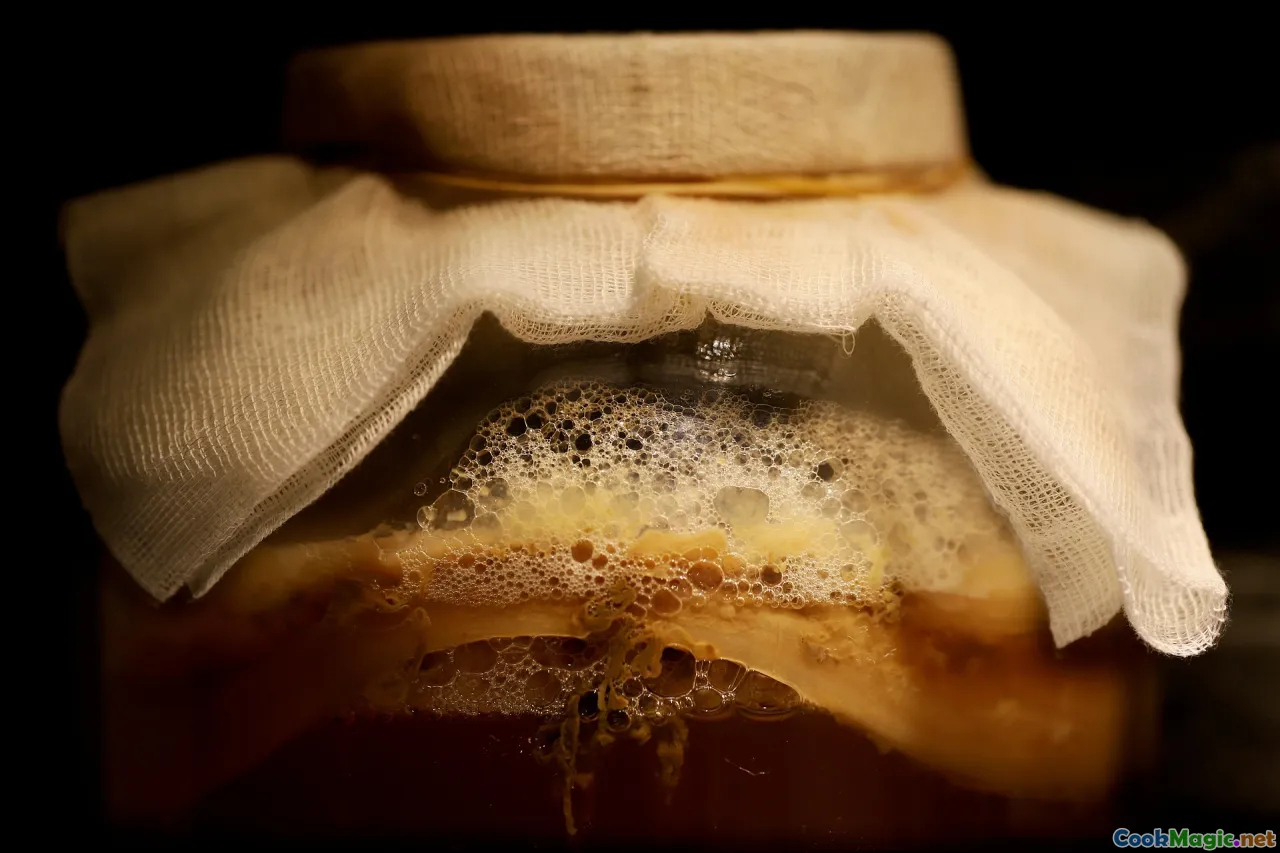
Teff batter ferments via wild yeasts and lactic acid bacteria that colonize the flour and your kitchen. Give them time and the right temperature, and they create a microcosm of acidity and bubbles. The bacteria lower the pH—often landing between 3.8 and 4.2—producing lactic and acetic acids that we taste as lemony tang and a subtle cider note. Yeasts generate carbon dioxide, inflating countless eyes that you see when the batter hits heat.
테프 반죽은 밀가루와 주방에 자리한 야생 효모와 젖산 박테리아에 의해 발효된다. 시간을 주고 적절한 온도를 제공하면 산도와 거품의 미시 세계가 만들어진다. 박테리아는 pH를 낮춰 보통 3.8~4.2 사이에 도달하고, 젖산과 초산을 만들어 우리가 레몬 같은 산미와 은은한 사과주 노트를 맛본다. 효모는 이산화탄소를 만들어 반죽이 열을 받았을 때 눈이 셀 수 없이 생겨난다.
If you love sourdough, you will recognize this cadence: flour and water invite invisible guests to a slow party. But injera batter is thinner and more delicate, and the dance is guided by a brilliant old trick called absit, a gelatinized paste made from the batter itself. By cooking a small portion of fermented batter into a glossy, starchy slurry and returning it to the main bowl, you set the batter’s structure like a gentle net. This is what creates tenderness and those iconic holes.
사워도우를 사랑한다면 이 리듬을 알아챌 것이다: 밀가루와 물이 보이지 않는 손님들을 초대해 천천히 파티를 벌인다. 그러나 인제라 반죽은 더 얇고 섬세하며 이 춤은 absit(앱싯)이라는 오래된 기발한 요령에 의해 이끈다. 발효된 반죽의 소량을 광택 있는 전분질 슬러리로 요리해 메인 볼에 다시 넣으면 반죽의 구조가 부드러운 그물처럼 자리 잡는다. 이것이 부드러움과 그 아이코닉한 눈들을 만들어낸다.
The process is forgiving. It rewards attention more than perfection. Keep a nose for aroma: cleanly sour, slightly malty, never sharp or rotten. Watch for bubbles clustered like constellations, a light schism between a watery top layer and creamy batter below. With each batch, you will learn to read signs: a slow foam means the room is cool; a too-rapid tang might mean a starter that needs feeding.
과정은 관대하다. 주의에 더 큰 보상을 준다. 향기에 예민해지라: 깨끗하게 시고, 약간 맥아향이 있으며, 날카롭거나 썩은 냄새는 없어야 한다. 별자리처럼 모인 거품, 윗층의 물 같은 표면과 아래의 크림빛 반죽 사이의 미세한 균열을 보아라. 매 배치마다 징후를 읽는 법을 배우게 된다: 느린 거품은 방의 온도가 차다는 뜻이고, 너무 빠른 산도는 시작균이 먹여져야 한다는 신호일 수 있다.
My first household starter: memory in a jar
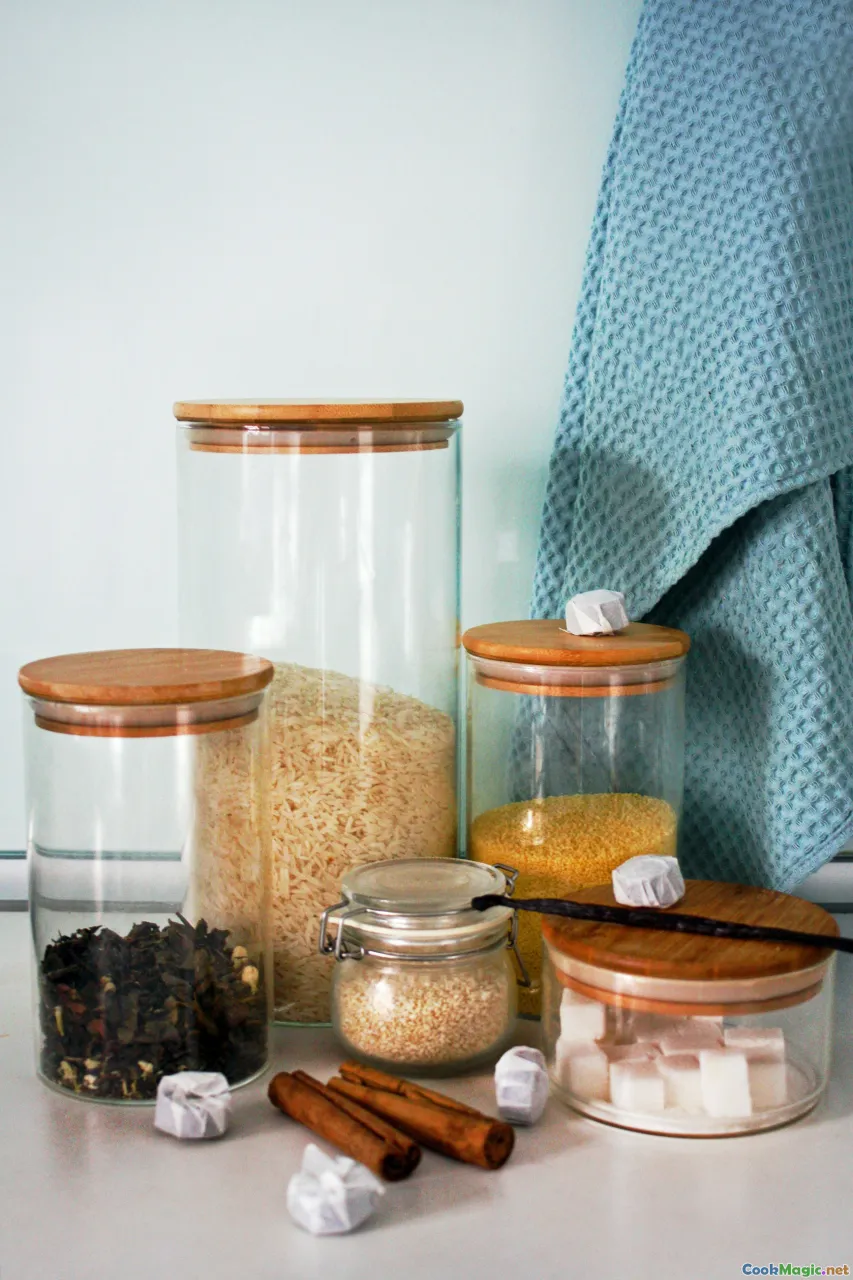
In my own kitchen, thousands of miles from Addis, I keep a small glass jar with a cloth cover. My ersho—the liquid from a previous batch—lives there, a thin amber that smells like tart apple peels and warm soil. The first time I grew it, I mixed 50 grams of brown teff with 60 grams of filtered water, stirred until smooth, and left it at 24–26°C (75–79°F). By day two it breathed faintly. By day three it had freckles of bubbles and a pleasing sourness. I fed it again with equal parts flour and water and watched it wake faster.
에디오피아에서 수천 마일 떨어진 내 주방에서 나는 천으로 덮인 작은 유리병을 보관한다. 이전 배치의 액체인 어쇼(ersho)가 거기에 남아 있는데, 시큼한 사과 껍질과 따뜻한 흙 냄새가 나는 얇은 호박빛이다. 처음으로 그것을 발효시켰을 때, 갈색 테프 50 g과 정제된 물 60 g을 섞어 부드럽게 될 때까지 저어 주고 24–26°C(75–79°F)에서 두었다. 둘째 날에는 가볍게 숨을 쉬었고, 셋째 날에는 거품 반점이 생기고 기분 좋은 시큼함이 돌았다. 같은 비율의 밀가루와 물로 다시 먹여주고 더 빨리 깨어나는 것을 지켜봤다.
Water matters. Chlorinated tap water can slow fermentation, so I use filtered or let the water stand overnight to let chlorine dissipate. Temperature matters, too. If your kitchen is cool, you can tuck the starter into your oven with the light on, or near a warm appliance. If your kitchen is hot, fermentation will speed; you might shorten times and refrigerate to keep flavors clean.
물도 중요하다. 염소가 들어간 수돗물은 발효를 늦출 수 있어, 나는 여과된 물을 사용하거나 염소가 증발하도록 물을 하룻밤 두고 둔다. 온도도 중요하다. 주방이 차다면 스타터를 오븐에 불을 켜 두거나 따뜻한 가전 근처에 숨겨두라. 주방이 더우면 발효가 빨라 시간을 단축하고 맛을 깨끗하게 유지하기 위해 냉장 보관하라.
Tools and sourcing: building a tiny injera station at home

You do not need a traditional clay stove to make injera at home, though if you have access to a large electric mitad (sometimes sold as a heritage or multi-purpose 16-inch griddle), you will love the large, even surface. Many diaspora cooks use a lefse griddle for similar reasons. A 12-inch nonstick skillet or crepe pan also works beautifully, especially with practice.
집에서 인제라를 만들 때 전통적인 점토 스토브가 필요하지 않다; 다만 큰 전기 미다드(전통적이거나 다목적 16인치 그리들로 팔리기도 한다)에 접근할 수 있다면 넓고 고른 표면을 사랑하게 될 것이다. 많은 디아스포라 요리사들은 비슷한 이유로 레프세 그리들을 사용한다. 12인치 논스틱 프라이팬이나 크레이프 팬도 훌륭하게 작동한다, 특히 연습과 함께라면.
A short list of tools and ingredients:
-
Teff flour: Maskal brown or ivory teff works reliably; Bob’s Red Mill teff flour is widely available.
-
Filtered water.
-
Fine sea salt.
-
A medium to large bowl, ideally glass or stainless steel.
-
A whisk or wooden spoon.
-
A ladle or measuring cup for pouring.
-
A lid that fits your pan to trap steam.
-
Optional but useful: an infrared thermometer to read pan surface (aim for 200–230°C / 390–450°F), a pH strip for curiosity (pH ~4 is a good target), a rubber spatula.
-
테프 가루: Maskal의 갈색 또는 아이보리 테프가 안정적으로 작동합니다; Bob’s Red Mill의 테프 가루도 널리 구할 수 있습니다.
-
여과수.
-
미세 소금.
-
중간에서 큰 그릇, 가능하면 유리나 스테인리스.
-
거품기나 나무 숟가락.
-
붓거나 부으려는 때의 국자나 계량컵.
-
팬에 맞는 뚜껑으로 스팀을 가두기.
-
선택적이지만 유용한 도구: 팬 표면을 읽는 적외선 온도계(목표 200–230°C / 390–450°F), 호기심용 pH 스트립(pH 약 4가 좋은 목표), 고무 주걱.
If you live near Ethiopian groceries, ask for injera flour blends and fresh teff. In Washington, DC, I’ve found excellent teff near U Street. In Oakland, I’ve bought it at small markets around Temescal, and in Seattle near Central District restaurants. Online, The Teff Company ships nationwide.
에티오피아 식료품점 인근에 살고 있다면 인제라 가루 블렌드와 신선한 테프를 문의하라. 워싱턴 DC의 U 스트리트 근처에서 훌륭한 테프를 찾았고, 오클랜드의 템스칼(Temescal) 인근의 소형 시장들에서, 시애틀의 센트럴 디스트릭트 근처의 식당들에서도 구입했다. 온라인상에서 The Teff Company가 전국으로 배송한다.
A practical timeline: from dry flour to fragrant batter
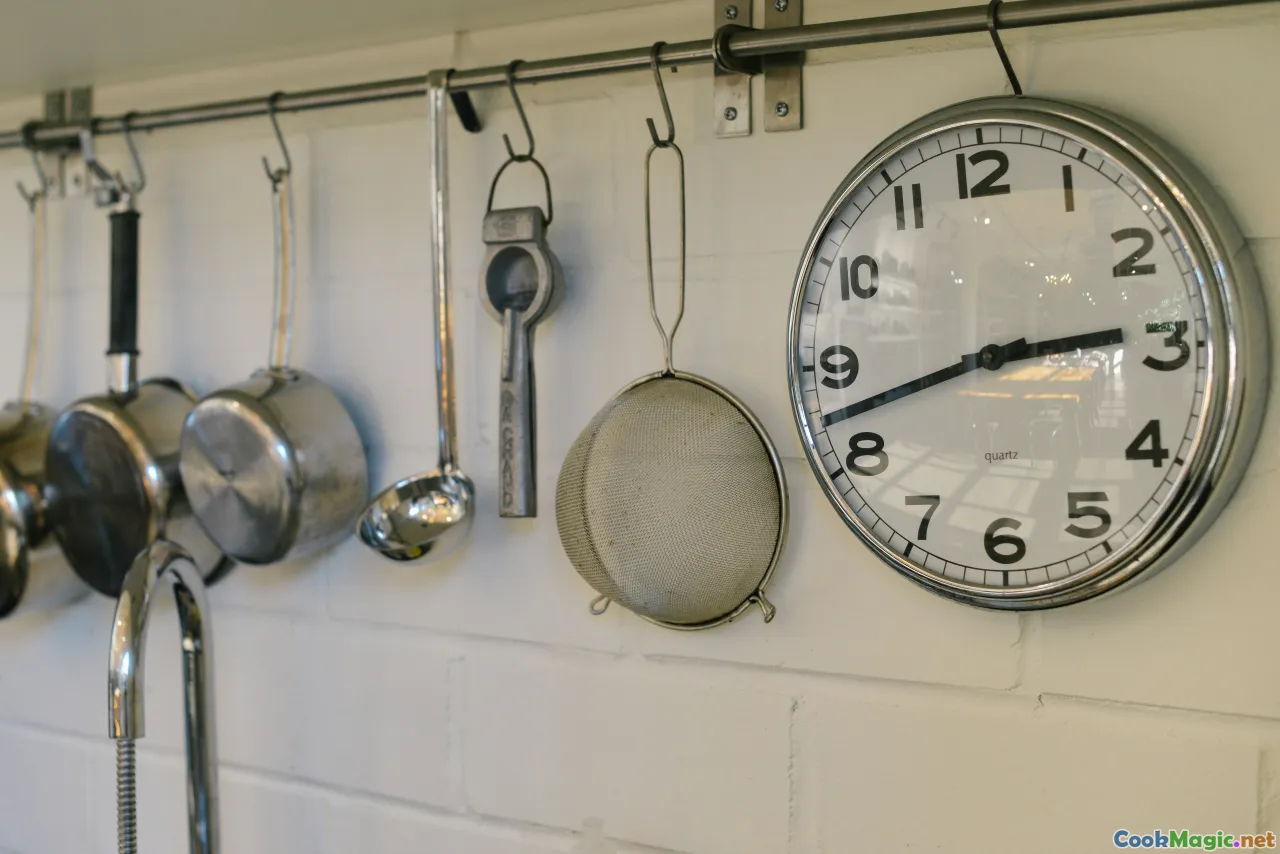
Here is a three-day schedule that fits a regular workweek, producing 8 to 10 generous injera.
여기에는 일반적인 주간 일정에 맞춘 3일짜리 일정이 있다. 넉넉한 인제라 8~10장을 만들어 낸다.
Day 1 (evening)
- Mix starter and batter base.
- Let it ferment overnight at room temperature.
1일차(저녁)
- 스타터와 반죽 베이스를 섞는다.
- 실온에서 하룻밤 발효시킨다.
Day 2 (evening)
- Check aroma and bubbles.
- Prepare absit and add to batter.
- Ferment again overnight.
2일차(저녁)
- 향과 거품을 확인한다.
- Absit을 준비해 반죽에 추가한다.
- 다시 하룻밤 발효한다.
Day 3 (morning or evening)
- Stir, season with salt.
- Adjust to pourable consistency.
- Heat pan and cook.
3일차(오전 또는 저녁)
- 저어 소금을 넣고 간을 맞춘다.
- 붓기 가능한 농도로 맞춘다.
- 팬을 달궈 굽는다.
Temperature is the heartbeat. At 24–26°C (75–79°F), this rhythm produces a gently sour, lively batter. If your kitchen is cooler, extend each fermentation by 12 to 24 hours; if warmer, shorten. Trust your senses over the clock.
온도가 맥박이다. 24–26°C(75–79°F)의 온도에서 이 리듬은 은은하게 시고 활발한 반죽을 만들어낸다. 주방이 더 차다면 각 발효를 12–24시간 연장하고, 더 따뜻하면 단축하라. 시계보다 감각을 믿어라.
How-to, step by step: 100 percent teff injera at home

Ingredients
- 600 g teff flour (brown, ivory, or a mix)
- 900–1000 g filtered water, divided (start with 900; you will adjust)
- 8 g fine sea salt (about 1.5 teaspoons)
- Optional: 60 g active teff starter or 50 ml ersho (from a previous batch); if you have neither, the batter will still ferment, just slower
재료
- 테프 가루 600 g(갈색, 아이보리, 또는 혼합)
- 여과수 900–1000 g를 나눠 사용(처음 900 g로 시작하고 조절)
- 미세 해염 8 g(약 1.5 티스푼)
- 선택사항: 활성 테프 스타터 60 g 또는 에르쇼 50 ml(이전 배치에서); 둘 다 없으면 반죽은 여전히 발효되지만 더 느리게 진행
Day 1: Mix
- In a large bowl, whisk 600 g teff flour with 700 g water until smooth, the texture of loose pancake batter. If using starter or ersho, stir it in now.
- Cover with a breathable cloth and leave at room temperature for 18–24 hours. You should see small bubbles forming at the surface by the end of this period.
1일차: 섞기
- 큰 그릇에 테프 가루 600 g과 물 700 g를 섞어 느슨한 팬케이크 반죽처럼 부드럽게 만든다. 스타터나 에르쇼를 사용하는 경우, 지금 섞어 넣는다.
- 숨을 통과시키는 천으로 덮고 실온에서 18–24시간 두어라. 이 기간 말미에는 표면에 작은 기포가 생기는 것을 볼 수 있다.
Day 2: Prepare absit and build structure
- The batter should smell pleasantly sour, not sharp. Stir to deflate. If a thin liquid has risen to the top, you can pour off some or stir it back in depending on how sour you like your injera.
- Remove 10 percent of the batter to a small saucepan (about 120 g). Add 120 g water. Cook over medium heat, stirring constantly, until it thickens to a glossy porridge—this is absit. You are gelatinizing the starch, making a paste that will lend body.
- Let the absit cool for a few minutes, then whisk it back into the main bowl thoroughly. The batter will become silkier.
- Cover and ferment another 12–18 hours.
2일차: absit 준비 및 구조 형성
- 반죽은 상쾌하게 시큼한 냄새가 나야 하며, 날카롭지 않아야 한다. 부풀어 오른 것을 꺾으려 섞어주고, 위로 올라온 얇은 액체가 있다면 그 일부를 따라내거나 반죽에 다시 넣어주며 산도 취향에 맞춘다.
- 반죽의 10%를 작은 소스팬에 옮겨 담고 물 120 g를 더한다. 중불에서 저으면서 걸쭉한 광택 있는 죽처럼 될 때까지 끓인다—이것이 absit이다. 전분을 젤로 바꿔 구조를 주는 페이스트를 만든다.
- absit를 몇 분간 식힌 뒤, 그것을 메인 볼에 다시 잘 휘저어 섞는다. 반죽은 더 실크처럼 매끄러워진다.
- 덮고 12–18시간 더 발효시킨다.
Day 3: Season, thin, and cook
- Stir the batter. It should be aerated and pourable, with lively bubbles. Whisk in 8 g salt. Add additional water, a little at a time, until the batter is like heavy cream—fluid, not gloopy. In practice, I usually end around 1000 g total water for 600 g flour.
- Heat your pan or griddle: on a nonstick skillet, medium-high heat works; with an infrared thermometer, target 200–230°C (390–450°F). A droplet of water should skitter and evaporate quickly.
- Lightly wipe the pan with a barely oiled paper towel if your pan is new; a seasoned nonstick often needs no oil.
- Stir the batter before each pour. Ladle about 3/4 cup for a 12-inch pan. Pour in a spiral, starting from the outside and moving inward, tilting the pan to encourage even spread. Aim for a thickness of 2–3 millimeters.
- Watch for eyes to appear—first pinpricks, then larger bubbles that open and hold. This should happen within 20–40 seconds if the pan is hot enough.
- Cover with a lid and steam for 45–60 seconds. The surface should set, go from glossy to matte, and the edges should lift slightly.
- Do not flip. Slide a thin spatula under the edge or lift with your fingers and lay the injera on a clean cloth to cool. Repeat, re-stirring the batter each time.
3일차: 간 맞추고 묽게 하여 굽기
- 반죽을 저어준다. 공기가 잘 차 있고 흐를 수 있을 정도여야 하며, 활발한 거품이 있어야 한다. 소금 8 g을 넣고 휘저어 섞는다. 필요하면 물을 조금씩 더해 반죽이 진 크림처럼 흐를 수 있을 정도로 맞춘다. 실전에서는 보통 가루 600 g에 대해 총 물 1000 g 정도가 된다.
- 팬이나 그리들을 달군다: 논스틱 팬의 경우 중고열이 적합하고, 적외선 온도계로는 200–230°C(390–450°F)를 목표로 한다. 물방울이 튀며 금방 증발해야 한다.
- 새 팬인 경우 아주 얇게 기름을 바른 두루마리 키친타월로 살짝 닦아라; 이미 사용한 논스틱은 기름이 필요 없다.
- 붓기 전에 반죽을 저어라. 12인치 팬에는 약 3/4컵 정도를 떠낸다. 바깥에서 안쪽으로 나선형으로 붓고 팬을 기울여 고르게 펼쳐지도록 한다. 두께는 2–3 밀리미터를 목표로 한다.
- 눈이 나타나는지 보라—먼저 점처럼, 그다음 더 큰 거품이 생겨 열리며 유지된다. 팬이 충분히 뜨거우면 20–40초 이내에 이를 본다.
- 뚜껑으로 덮고 45–60초 찜한다. 표면이 굳고 광택에서 매트로 바뀌며 가장자리가 살짝 들려야 한다.
- 뒤집지 않는다. 가장자리 아래에 얇은 주걱을 넣거나 손가락으로 들어 올려 깨끗한 천에 식힌다. 매번 반죽을 다시 저으며 반복한다.
Cooked injera should feel soft, flexible, and slightly bouncy. Stack them in a single layer to cool, then you can layer with parchment to store. The scent should be warm and tangy, with a faint sweetness under the sour.
다 구운 인제라는 부드럽고 탄력 있으며 약간 탄력이 있어야 한다. 한 겹으로 식히고, 보관할 때는 양피지로 겹겹이 포장하라. 향은 따뜻하고 산미가 느껴지며, 시큼함 아래에 은은한 단맛이 있다.
Reading the signs: eyes, aroma, and texture
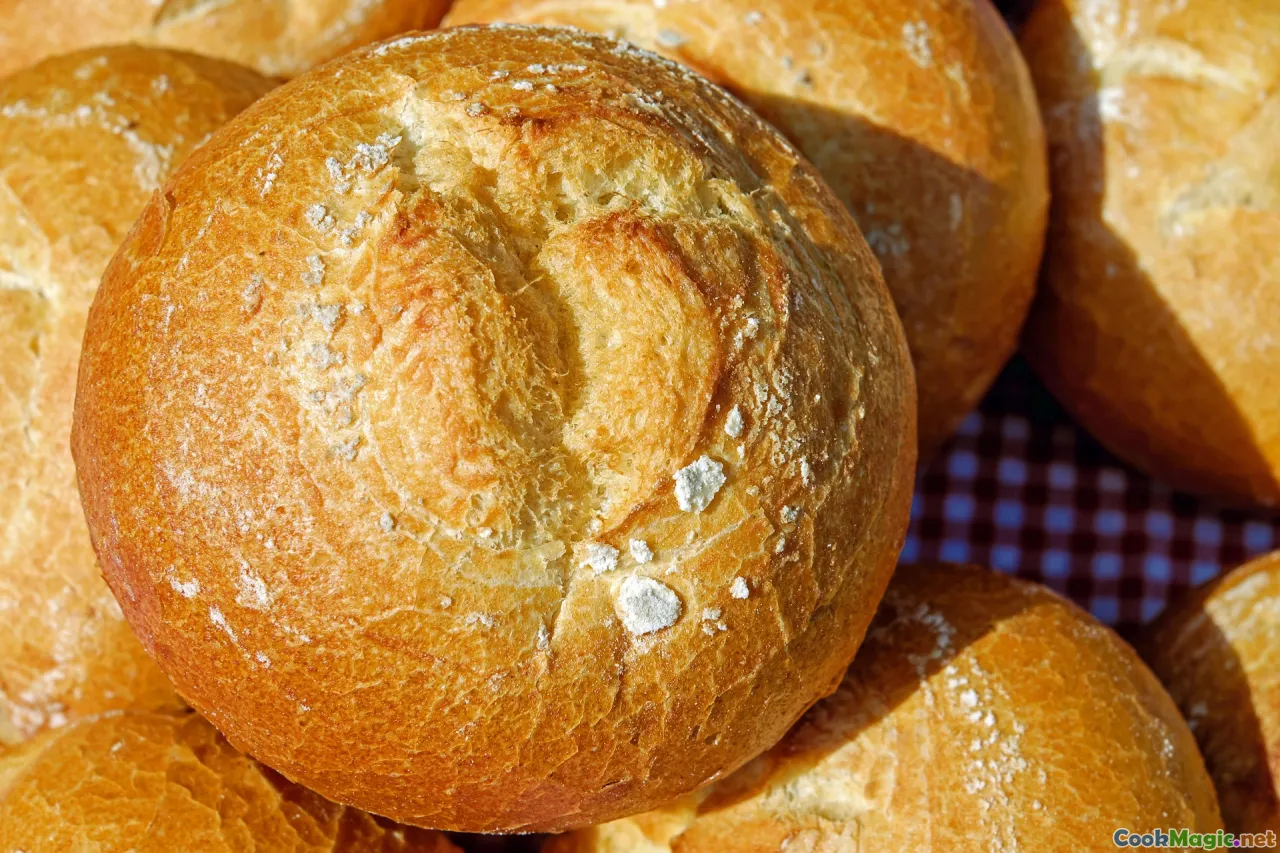
Good injera announces itself by look and feel. The eyes should be abundant and varied—constellations of tiny and mid-sized holes that look like rain hitting a pond. Too few eyes can mean batter that is too thick, insufficient fermentation, or low heat. Excessively large, collapsing holes can point to overly thin batter or a pan that is too hot.
좋은 인제라는 모양과 촉감으로 자신을 드러낸다. 눈은 풍부하고 다양해야 한다—작고 중간 크기의 눈들이 비가 연못에 내리는 것처럼 보이는 별자리처럼 분포한다. 눈이 너무 적으면 반죽이 너무 두껍거나 발효가 충분하지 않거나 열이 낮은 것을 의미한다. 너무 크고 금방 무너지는 눈은 반죽이 지나치게 얇거나 팬이 너무 뜨거운 것을 가리킨다.
Aroma is your compass: you want a clear, lemony acidity with hints of toasted grain. If the batter begins to smell harshly alcoholic, it has fermented too long or at too high a temperature; re-balance by whisking in fresh teff flour and water and allowing a shorter fermentation. If it smells flat, give it more time.
향은 당신의 나침반이다: 분명한 레몬 같은 산미와 구운 곡물의 힌트를 원한다. 반죽이 알코올 냄새를 강하게 풍기기 시작하면 발효가 너무 길거나 온도가 너무 높았다는 뜻이다. 신선한 테프 가루와 물을 더해 짧은 발효로 균형을 맞춰라. 냄새가 밋밋하면 시간을 더 주어라.
When you press the cooled injera, it should spring back slowly, leaving a dimple that half fills. When rolled, it should not crack. When eaten, it should cling to stew but not fall apart. If you hear the quiet hiss of steam when you lift the lid, you are in the right place.
식힌 인제라를 눌렀을 때 천천히 원상태로 돌아와 반쯤 채워진 움푹한 자국이 남아야 한다. 말 때 금이 가지 않아야 한다. 먹을 때는 스튜에 달라붙고 부서지지 않아야 한다. 뚜껑을 들어 올릴 때 조용한 수증기 소리가 들리면 올바른 길에 있다.
Absit versus no-absit: a comparison for curious bakers
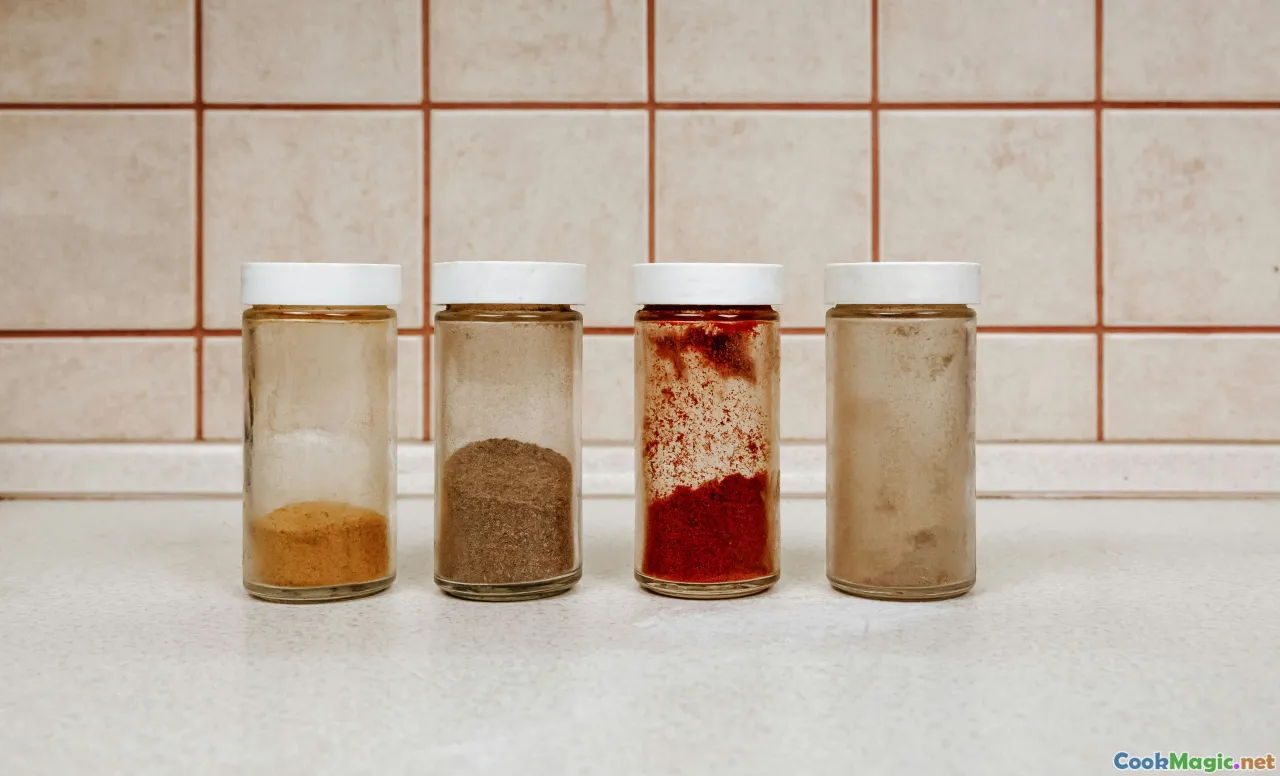
Absit is not strictly necessary, but it often marks the difference between good and great in 100 percent teff injera. In side-by-side batches, the absit bowl produces a bread with a satiny surface and deeper, more stable eyes. The gelatinized starch behaves like scaffolding, catching bubbles so they do not slip away. Without absit, especially with lighter ivory teff, you may get a delicate but more fragile crumb; it can still be excellent when perfectly fermented and cooked, but the margin for error is narrower.
Absit은 반드시 필요한 것은 아니지만 100% 테프 인제라에서 좋음과 위대함의 차이를 자주 만든다. 나란히 비교 배치에서 Absit 그릇은 광택 나는 표면과 더 깊고 안정된 눈을 가진 빵을 만든다. 젤라타이즈된 전분은 발판처럼 거품을 잡아 흘러나가지 않게 한다. Absit가 없으면, 특히 아이보리 색의 연한 테프의 경우 더 섬세하지만 더 취약한 부스러기가 생길 수 있다; 완벽하게 발효되고 요리되면 여전히 훌륭할 수 있지만 오차의 여지는 더 좁다.
If you love experiments: split your Day 2 batter. Leave one half as is and prepare absit for the other. Keep everything else equal. When you pour, notice how the absit batter forms eyes more quickly and sets evenly. Taste them side by side. The absit version often reads creamier on the tongue, with a more even tang.
실험을 좋아한다면: Day 2 반죽을 나눠 보라. 절반은 그대로 두고 다른 절반에 Absit을 준비하라. 나머지는 동일하게 유지하라. 부을 때 Absit 반죽이 눈을 더 빨리 형성하고 고르게 굳는지 보라. 함께 맛보라. Absit 버전은 혀에서 더 크림 같고 더 고른 산미를 자주 보여준다.
Brown versus ivory teff: flavor and performance

Brown teff injera wears a deeper color, sometimes a gentle cocoa-chestnut. Its aroma leans toward cacao nib, damp earth, straw after a long day in the sun. Ivory teff bakes into pale gold circles with lighter, almost floral notes. Brown teff tends to ferment with gusto, producing more vigorous eyes; ivory excels in tenderness and a milder acidity.
갈색 테프 인제라는 더 깊은 색을 띠며 때로는 은은한 코코아-초크넛 향을 낸다. 그 향은 카카오 닛, 촉촉한 흙, 햇볕 아래 하루를 보낸 건초의 향에 가까워진다. 아이보리 테프는 창백한 황금빛 원으로 구워지며 가볍고 거의 꽃향에 가까운 노트를 지닌다. 갈색 테프는 발효가 활발해 눈이 더 강하게 생기는 경향이 있고, 아이보리는 부드러움과 더 약한 산도를 자랑한다.
In Addis, I’ve been served deeply brown injera with kitfo’s warm butter and cardamom, a pairing that lets the bread’s earthiness amplify the spiced beef’s perfume. In Washington, DC, at Etete years ago, the injera leaned lighter and was exquisite with shiro and collards. In my home kitchen, a 60:40 mix of brown to ivory teff is my sweet spot. To taste the spectrum yourself, buy small bags of each and run batchlets: same hydration, same temp, different flavors.
아디스에서 깊은 갈색 인제라를 키프토의 따뜻한 버터와 카다멈과 함께 맛본 기억이 있는데, 그 조합은 빵의 흙내를 매운 소고기의 향기에 더해 주었다. 몇 해 전 워싱턴 DC의 Etete에서 인제라는 더 밝은 색으로 향했고 시로와 콜라드와 함께 먹기에 훌륭했다. 내 가정 주방에서는 갈색 60% 대 아이보리 40% 혼합이 가장 선호하는 조합이다. spectrum을 직접 맛보고 싶다면 각각의 작은 봉지로 구입해 소량 배치를 시도해 보라: 같은 수분, 같은 온도, 서로 다른 풍미.
Troubleshooting: when the griddle frowns

-
Batter sticks to the pan:
- Pan not hot enough. Preheat longer. Use the water-drop test.
- New nonstick surfaces can be fussy; wipe with a lightly oiled towel between pours for the first few.
- Batter too thin; whisk in a small spoon of teff to thicken slightly and rest 10 minutes.
-
반죽이 팬에 들러붙을 때:
- 팬이 충분히 달궈지지 않았다. 더 오래 예열하라. 물방울 테스트를 사용하라.
- 새 논스틱 표면은 까다롭다. 처음 몇 번은 붓기 사이에 기름을 살짝 묻힌 천으로 닦아라.
- 반죽이 너무 묽다. 반죽을 살짝 걸쭉하게 하기 위해 소량의 테프를 넣고 10분 정도 쉬게 하라.
-
No eyes or very few eyes:
- Underfermentation. Give it 6–12 more hours, warmer spot if possible.
- Batter too thick; thin with water in 15–30 ml increments.
- Pan too cool; raise heat and test again.
-
눈이 없거나 눈이 거의 없을 때:
- 발효가 부족하다. 6–12시간 더 주고 가능하면 더 따뜻한 곳으로 옮겨라.
- 반죽이 너무 두껍다; 물을 15–30 ml 단위로 추가해 얇게 하라.
- 팬이 너무 차다; 열을 올리고 다시 테스트하라.
-
Bitter or harshly sour flavor:
- Overfermented. Whisk in fresh teff and water (1:1 by weight) and allow a shorter fermentation.
- Use filtered water next time; chlorine can stress microbes.
-
쓴맛이나 날카로운 산미:
- 발효가 과도하다. 신선한 테프 가루와 물(무게 기준 1:1)을 넣고 더 짧은 발효를 하라.
- 다음에는 여과된 물을 사용하라; 염소가 미생물에 스트레스를 준다.
-
Cracking when rolled:
- Batter too thick or under-hydrated; thin slightly for the next pour.
- Overcooked; reduce steaming time by 10–15 seconds.
-
말 때 균열:
- 반죽이 너무 두껍거나 수분이 부족하다; 다음 붓기 전에 살짝 얇게 하라.
- 과도하게 구워졌음; 찜 시간을 10–15초 줄여라.
-
Gummy center:
- Batter too thick; thin a bit.
- Lid not venting; crack it slightly to let steam escape in the final 10 seconds.
-
중앙이 끈적일 때:
- 반죽이 너무 두껍다; 조금 묽게 하라.
- 뚜껑의 배기가 되지 않는다; 마지막 10초 동안 증기가 빠져나가게 살짝 벌려라.
Keep notes. Like any ferment, injera rewards a small kitchen log: flour brand, room temperature, times, water amounts, the sound the batter made when you stirred. Your next round will be better for it.
메모를 남겨라. 모든 발효처럼 인제라는 작은 주방 기록에 보상을 준다: 밀가루 브랜드, 실온, 시간, 물의 양, 반죽을 저을 때 나는 소리. 다음 라운드는 그것으로 더 나아질 것이다.
Skillet versus mitad: a cook’s-eye comparison

Traditional injera is cooked on a large circular griddle called a mitad or mogogo—clay or metal on a charcoal stove, or a modern electric version. The generous diameter allows enormous breads with even heat distribution. You pour in one generous spiral and never worry about the edge catching.
전통 인제라는 미다드(또는 모고고)라는 대형 원형 그리들에서 굽는다—점토 또는 금속으로 구성된 차콜 스토브 위에 올려두며, 현대의 전기 버전도 있다. 넓은 직경은 열이 고르게 퍼지는 거대한 빵을 가능하게 한다. 한 번의 넉넉한 나선형으로 붓고 가장자리가 들릴 걱정을 하지 않는다.
Most of us do not have room for a 16-inch mitad in a small apartment. A 12-inch nonstick skillet or crepe pan works well. The key differences you will notice:
대부분의 사람들은 작은 아파트에 16인치 미다드를 둘 공간이 없다. 12인치 논스틱 프라이팬이나 크레이프 팬이 잘 작동한다. 당신이 눈여겨볼 차이점:
- Heat envelope: The mitad’s broad plate keeps a wide constant heat zone, so eyes develop evenly. A smaller pan has a hotter center and cooler edges; pour with a gentle tilt to even this out.
- 열 곽: 미다드의 넓은 판은 넓고 일정한 열 구역을 유지해 눈이 고르게 발달한다. 작은 팬은 중앙이 더 뜨겁고 가장자리는 더 차다; 이를 고르게 만들려면 살짝 기울여 부어라.
- Moisture capture: A lid fits neatly over a skillet. The mitad needs a domed cover; some cooks use a large metal bowl. Good steam is vital for a tender surface.
- 수분 포착: 팬 뚜껑은 팬 위에 잘 맞는다. 미다드는 돔형 뚜껑이 필요하고 어떤 요리사들은 큰 금속 그릇을 쓰기도 한다. 부드러운 표면을 만드는 데 좋은 스팀이 필수다.
- Scale: You will cook more pieces on a skillet, which is not a drawback. Repetition hones your pour, and you will find your rhythm.
- 규모: 팬으로 더 많은 조각을 굽게 되지만 이것은 단점이 아니다. 반복은 붓기를 연마하고 당신의 리듬을 찾게 한다.
If you are deeply smitten with injera and cook it weekly, an electric griddle marketed for lefse or flatbreads is a solid compromise. I’ve used one happily for years.
인제라에 깊이 매료되어 매주 요리한다면, 레프세나 플랫브레드를 위해 팔리는 전기 그리들은 실질적인 타협이다. 나는 수년간 기꺼이 하나를 사용해 왔다.
Serving injera: the art of the shared table

An injera meal begins the moment you lift it warm from the pan. When friends come over, I spread a large round on a communal platter, then add a second folded along the edge for extra scooping power. Then come the dishes:
인제라 식사는 팬에서 따뜻한 상태로 들어 올리는 순간 시작된다. 친구들이 오면 큰 원형을 공동 접시에 펼친 뒤 가장자리에 접힌 부분을 추가로 접어 더 많은 떠먹을 힘을 얻는다. 그다음에 나오는 요리는:
- Doro wot: chicken simmered in berbere and onions until inky and fragrant, finished with hard-boiled eggs and niter kibbeh (spiced clarified butter). Tear a piece of injera, scoop the sauce, feel the heat bloom like sunset.
- 도로 워트: 베르게베레와 양파에 천천히 끓여 진하고 향기로운 닭고기 요리, 삶은 달걀과 니터 키베(향신료를 더한 정제 버터)로 마무리한다. 인제라 한 조각을 찢어 소스를 떠서 열기가 해질녘처럼 퍼지는 것을 느껴 보라.
- Misir wot: red lentils cooked down until creamy, deeply red with berbere, tasting of smoke and tomato and clove.
- 미시르 워트: 렌즈콩을 크리미해질 때까지 끓여 베르게베레와 함께 진한 붉은 색으로, 훈제 향과 토마토, 정향의 맛이 난다.
- Shiro: a silky stew made from chickpea or broad bean flour, perfumed with garlic and sometimes rosemary.
- 시로: 병아리콩 가루나 넓은콩 가루로 만든 매끈한 스튜로 마늘 향과 때때로 로즈마리를 곁들인다.
- Gomen: collards simmered with aromatics until tender, the iron-sweet greens a counterpoint to the heat.
- 고멘: 향신료와 함께 천천히 졸인 케일로, 철분이 풍부하고 달콤한 초록 잎채소가 매운 맛과 대비를 이룬다.
- Atakilt: cabbage and carrots cooked gently with turmeric, soft and tender, faintly sweet.
- 아타킬트: 양배추와 당근을 강황으로 살살 조려 부드럽고 살짝 달다.
- Tibs: sizzling beef or lamb with onions and jalapeños, the pan juices soaking the bread.
- 티브스: 양파와 할라피뇨를 곁들여 지글지글 구운 소고기 또는 양고기, 팬의 육즙이 빵을 흠뻑 적신다.
A note on etiquette: eat with your right hand, tear small, use the bread as your utensil. Offer a gursha—a wrapped bite—to a friend or elder as a sign of affection. When the last piece, soaked in sauce, remains, pass it with a smile. The table is conversation, and injera is grammar.
예절에 대한 주의: 오른손으로 먹고, 작게 찢어 빵을 도구로 삼으며, 애정의 표시로 친구나 어른에게 구르샤(랩 한 입)을 건네라. 마지막 한 조각이 남아 소스에 흠뻑 젖어 있으면 미소와 함께 건네라. 식탁은 대화이고, 인제라는 문법이다.
Pair with tej (honey wine), which smells of beeswax and spring blossoms, or with beer. And do not skip the coffee ceremony if offered. The scent of freshly roasted beans, the small cups, the smoking incense—this is hospitality woven from time itself.
꿀와인인 테즈(tej) 또는 맥주와 함께하면 좋다. 제안되면 커피 의식도 거르지 말라. 갓 볶은 원두의 향, 작은 잔들, 피워 오르는 향의 향연—시간으로 엮인 환대다.
Regional and diaspora variations

In Addis Ababa, I’ve had injera that tasted deeply of teff and sunshine in simple neighborhood spots, and elegantly tangy versions at Kategna and Habesha 2000. In the northern regions, where sorghum and barley are common, injera may be blended to suit the harvest. In parts of Tigray and Wollo, a slightly different fermentation schedule yields a bread with a deeper tang.
아디스아바바에서 간단한 동네 식당의 인제라는 테프와 햇빛의 깊은 맛이 났고, 카테그나(Kategna)와 하베샤 2000(Habesha 2000)에서는 세련되게 시큼한 버전을 맛볼 수 있었다. 수수와 보리가 흔한 북부 지역에서는 수확에 맞춰 인제라를 혼합하기도 한다. 티그라이(Tigray)와 볼로 지역에서는 발효 일정이 조금 달라 더 깊은 산미의 빵이 만들어진다.
In diaspora kitchens, flour blends often accommodate available grains and equipment. In Oakland’s Cafe Colucci, the injera leans robust, perfect for rich tibs; at Dukem on DC’s U Street, I once ate a platter where the bread was shimmering and fine-pored, delicate yet strong. In London’s Lalibela, the injera arrives pale and perfumed, and the shiro tastes as if someone cooked it inside a clay pot that remembered a forest.
디아스포라 주방에서는 사용 가능한 곡물과 장비에 맞춰 가루 혼합이 이루어지는 경우가 많다. 오클랜드의 Café Colucci의 인제라는 견고하게 기울어져 티브스가 풍부하고, DC의 U 스트리트의 Dukem에서는 빵이 빛나고 미세한 구멍이 있는 접시를 맛본 적이 있는데, 섬세하면서도 강했다. 런던의 Lalibela에서 오는 인제라는 창백하고 향이 난 상태로 도착했고, 시로는 마치 숲을 기억한 흙 항아리 속에서 누군가가 만든 듯한 풍미였다.
If you make injera weekly, save some of the sour liquid (ersho) from your batter to inoculate the next batch. This creates your house flavor—a personal orchestra of microbes tuned to your kitchen. Over months, you will taste nuance settle into your bread like a season.
주간으로 인제라를 만든다면 반죽의 시큼한 액체(에르쇼)를 조금 남겨 다음 배치를 접종하라. 이것이 집의 풍미를 만들어 내는 방식으로, 당신의 주방에 맞춰 조율된 미생물의 개인 오케스트라다. 몇 달에 걸쳐 미묘함이 빵에 계절처럼 자리 잡는 것을 맛보게 될 것이다.
The flavor architecture of injera: a cook’s analysis
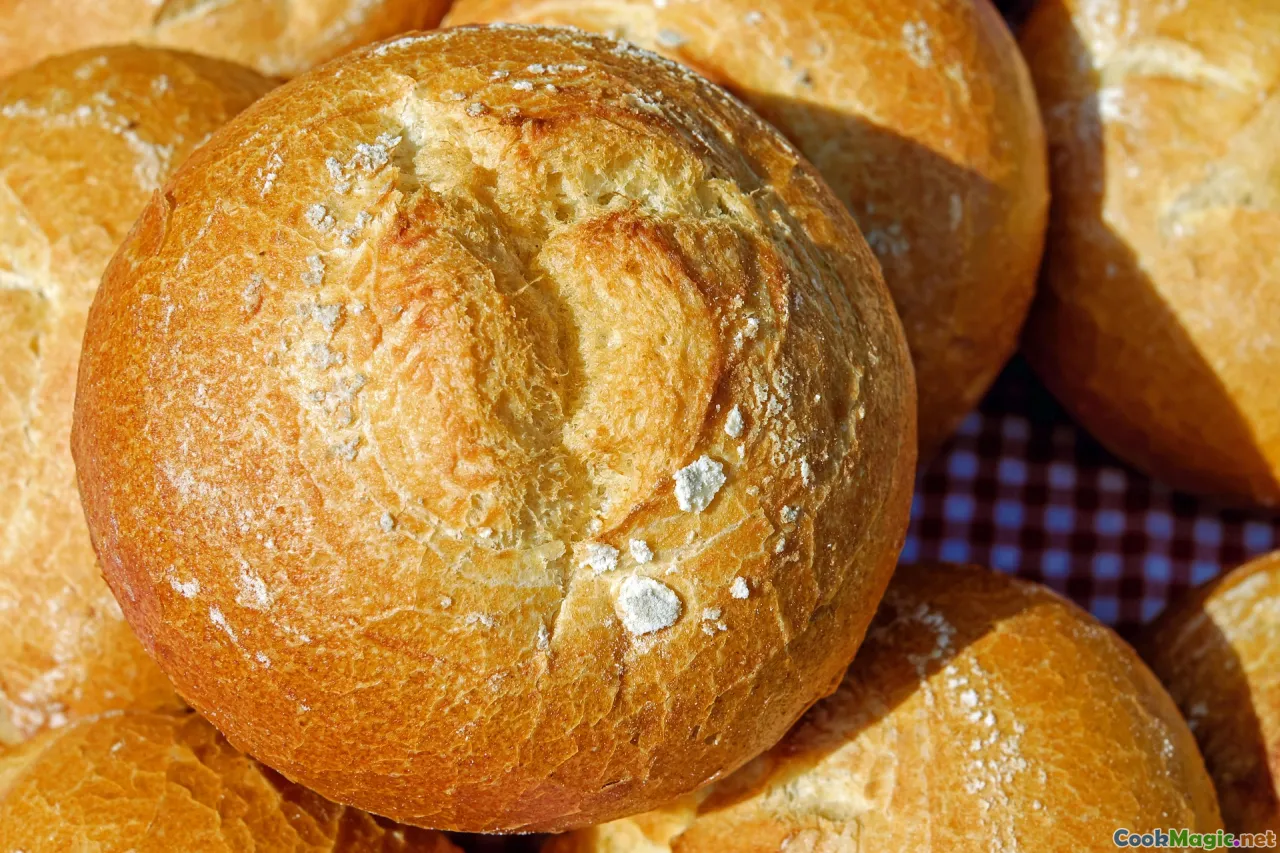
Tasting injera with intention reveals layers:
- Initial aroma: lactic brightness—yogurt and green apple peels—framed by warm grain. Brown teff adds cocoa-nib bitter and petrichor.
- First bite: a gentle tang hits the sides of the tongue; salt heightens the grain’s sweetness. The crumb compresses and springs.
- Mid-palate: a whisper of toasted hay, faint minerality (iron, calcium), soft nut notes. Sauce begins to seep, binding to the network.
- Finish: clean, lemony; lingering warmth if paired with berbere; a faint sweetness that echoes the grain.
의도적으로 인제라를 맛보면 층이 드러난다:
- 초기 향: 젖산의 밝은 냄새—요거트와 초록 사과 껍질의 향이 따뜻한 곡물로 둘러싸여 있다. 갈색 테프는 코코아 닛의 쓴맛과 빗내음을 더한다.
- 첫 입: 혀의 옆에 은은한 산미가 닿고, 소금이 곡물의 단맛을 돋운다. 부스러기가 눌렸다가 다시 튀어나온다.
- 중간 맛: 토스트한 건초의 속삭임, 미네랄감(철, 칼슘), 부드러운 견과 맛. 소스가 스며들기 시작해 네트워크에 결합한다.
- 피니시: 깔끔하고 레몬 같은 산미; 베르베레와 함께하면 은은한 따뜻함이 남고, 곡물의 미묘한 달콤함이 남는다.
This architecture is adjustable. If you prefer more lactic than acetic acidity, keep fermentation cooler and longer. If you want a brighter, sharper tang, allow a slightly warmer ferment and stir less often so acetic producers can bloom near the surface. Salt at the end keeps bacteria honest and flavors clean.
이 구조는 조정 가능하다. 젖산이 더 많고 아세트산은 덜하고 싶다면 발효를 더 차갑고 오래 유지하라. 더 밝고 예리한 산미를 원하면 발효를 조금 더 따뜻하게 두고 자주 저어주지 않아 표면 근처의 초산균들이 활발히 피도록 하라. 마지막에 소금을 넣어 박테리아의 활력을 유지하고 맛을 깨끗하게 하라.
Tips for mastering the pour

- Stir before every ladle. Bubbles rise; you want an even suspension.
- Start at the outer rim and spiral inward. If your pan is round and heavy, a small wrist tilt finishes the spread.
- If the batter hesitates and leaves bare spots, your batter is too thick. Thin in small increments.
- Do not overfill. Thin injera cooks evenly and forms elegant eyes. Thick injera can gum.
- Commit to the lid. Steam sets the top as the bottom cooks. If the top remains glossy after 45 seconds, give it another 10–15 seconds.
- Cool on cloth. A clean cotton towel wicks moisture without sticking. Paper can grab.
붓는 기술 마스터하기 팁
- 매번 붓기 전에 저어라. 거품이 올라오므로 고르게 떠붙자.
- 바깥 가장자리에서 시작해 안쪽으로 나선형으로 진행하라. 팬이 둥글고 무겁다면 손목의 작은 기울임으로 고르게 펼쳐지게 하라.
- 반죽이 망설이며 자국이 남으면 반죽이 너무 두껍다. 조금씩 얇게 하라.
- 넘치지 않게 하라. 얇은 인제라는 고르게 익고 우아한 눈이 생긴다. 두꺼운 인제라는 끈적해질 수 있다.
- 뚜껑을 고수하라. 증기가 표면을 굳히고 아래를 익힌다. 45초가 지나도 표면이 광택이면 10–15초 더 두어라.
- 천으로 식혀라. 깨끗한 면 타월은 수분을 흡수하고 달라붙지 않는다. 종이는 달라붙을 수 있다.
Practice cures most ills. In two or three sessions, your body will memorize the timing the way it memorizes how to flip an omelet.
연습이 대부분의 문제를 해결한다. 두세 차례의 연습으로 당신의 몸은 타이밍을 기억하게 된다.
Sanity-saving hacks for busy kitchens
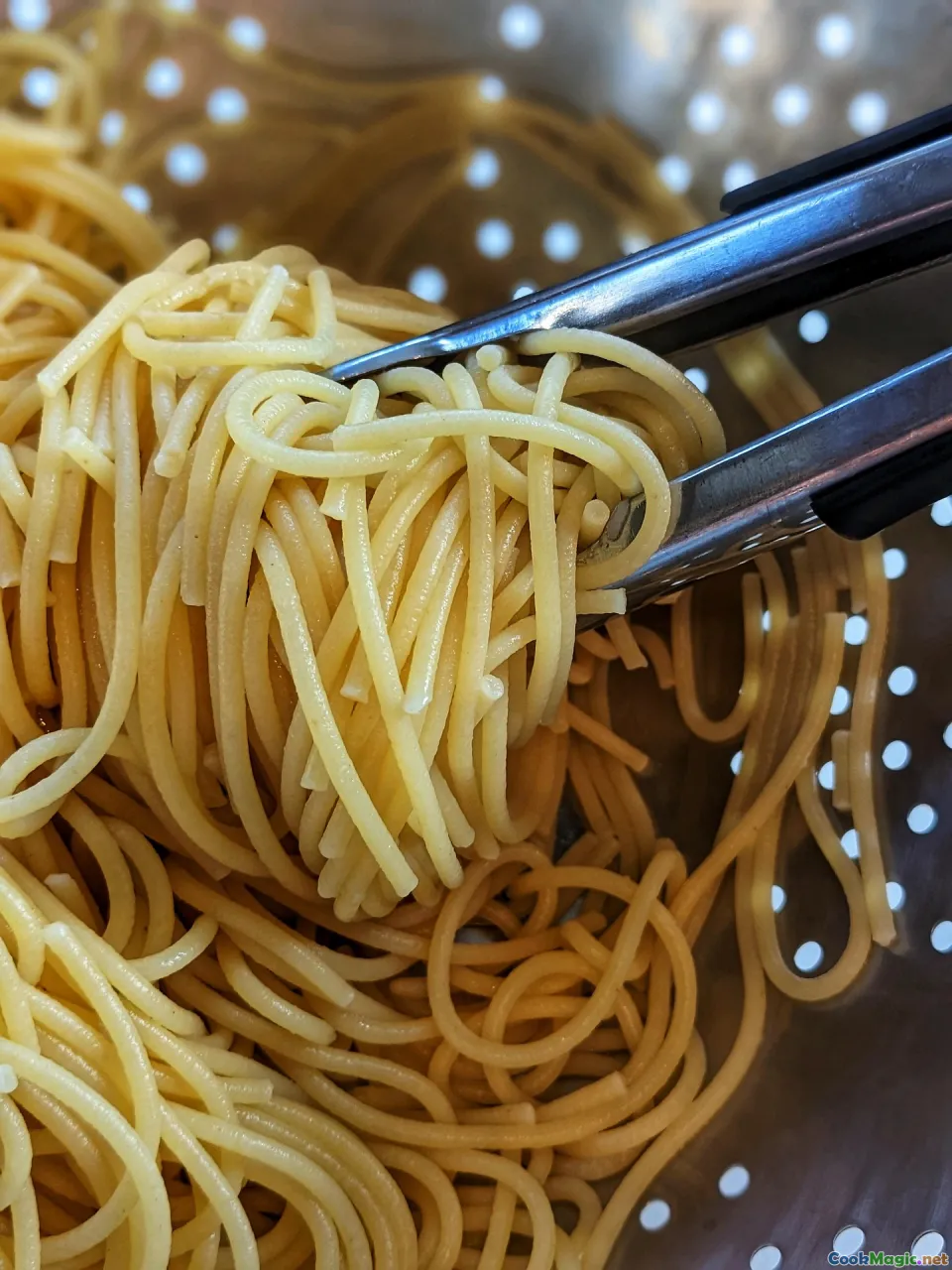
- Refrigerate part of your batter after Day 2. Cold slows fermentation; the flavor will hold while you cook as needed. Bring to room temperature and stir before cooking.
- 2일 차 이후 반죽의 일부를 냉장 보관하라. 차가운 온도는 발효를 느리게 하고 필요할 때 요리하는 동안 맛이 유지된다. 사용하기 전에 실온으로 데우고 저어라.
- Freeze cooked injera in stacks separated by parchment. Reheat by steaming for 30–45 seconds or microwaving under a damp towel.
- 구운 인제라는 양피지로 사이를 띄워 겹겹이 쌓아 보관하라. 데우려면 찜으로 30–45초, 젖은 수건 아래 전자레인지로 가열하라.
- Keep a small jar of ersho in the fridge. Even a few tablespoons jump-start the next batch’s flavor.
- 냉장고에 에르쇼를 작은 병에 담아 두라. 몇 스푼만 있어도 다음 배치의 맛을 빠르게 시작시켜 준다.
- Plan around fasting days. Vegan stews hold well and make excellent leftovers; injera spans multiple meals without losing charm.
- 금식일을 고려해 계획하라. 비건 스튜는 보관이 잘 되고 남은 음식으로도 훌륭하며, 인제라는 여러 끼를 아우르며 매력을 잃지 않는다.
Nutrition, sustainability, and the small seed that could
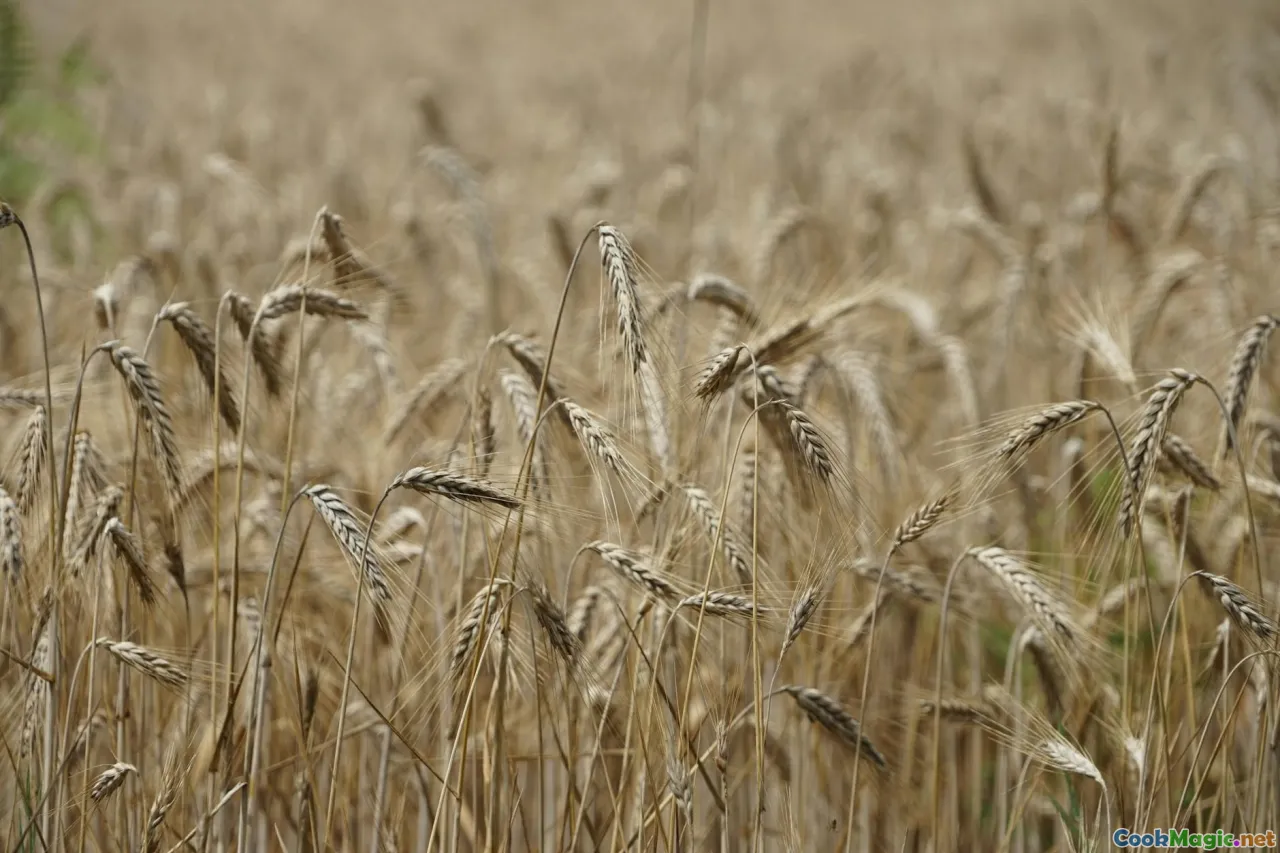
Teff is resilient, thriving in marginal soils and variable rainfall. Its small seed yields densely nutritious flour: rich in fiber, high in calcium and iron for a cereal, a source of resistant starch. For those who avoid gluten, teff is a boon not just as a substitute but as a distinct pleasure. Grown with care—by farmers in Ethiopian highlands and by producers in Idaho or Nevada—teff connects ancient agriculture to contemporary kitchens.
테프는 척박한 흙과 변덕스러운 강우에서도 잘 자라나는 탄력 있는 곡물이다. 그 작은 씨앗은 섬유질이 풍부하고 칼슘과 철분이 많은 가루로, 항저장성 전분의 원천이 된다. 글루텐을 피하는 이들에게 테프는 대체재로서의 이점뿐만 아니라 독특한 즐거움을 주는 곡물이다. 에티오피아 고지의 농부들과 아이다호나 네바다의 생산자들이 정성껏 재배한 테프는 고대 농업을 현대의 주방과 연결한다.
Sustainability is not only about the field; it is about how we eat. An injera-centered meal, abundant in legumes and greens, has a lighter footprint and satisfies deeply. The bread transforms even simple stews into a banquet.
지속 가능성은 들판에 관한 것만이 아니다; 우리가 어떻게 먹느냐다. 콩류와 채소가 풍부한 인제라 중심의 식사는 발자국을 가볍게 하고 깊이 만족시킨다. 그 빵은 간단한 스튜를 한층 더 큰 연회로 바꿔 준다.
A story from a steam-clouded night in Addis

It was raining, the kind that smells of electricity and wet dust, and we ducked into a small place near Bole. The cook’s hands moved in a choreography so practiced it looked like dancing: ladle, spiral, lid, lift, lay. The room was loud with laughter and the clatter of metal bowls. We ordered tibs that arrived gleaming with butter and jalapeño, and misir wot that tasted of slow onions and respect. The injera was pliant and alive, the last piece stained cinnabar from berbere. A little girl at the next table fed her grandmother a careful gursha, eyes intent. The grandmother laughed and blessed her. In that moment, with steam fogging the windows and the city humming beyond, the bread felt like language.
비가 내리고 있었다. 전기 냄새와 젖은 먼지가 섞인 빗소리 같은 비가 내리던 오후, 볼레(Bole) 근처의 작은 가게로 몸을 피했다. 요리사의 손놀림은 춤처럼 연습된 동작으로 움직였다: 국자, 나선형, 뚜껑, 들기, 놓기. 방은 웃음과 금속 그릇의 소리로 시끌벅질했다. 우리는 버터와 할라페뇨가 반짝이는 티브스와 천천히 조린 양파의 풍미가 난 미시르 워트를 주문했다. 인제라는 탄력 있고 살아 있었고, 마지막 한 조각은 베르베레의 진홍색으로 물들었다. 옆 테이블의 작은 소녀가 할머니에게 조심스럽게 구르샤를 건네자, 할머니는 웃으며 축복했다. 그 순간 창문에 김이 서렸고 도시의 소리가 저 너머에서 울려 퍼지는 가운데, 빵은 언어처럼 느껴졌다.
Back home, when I pour batter onto a hot pan in the quiet of evening, that memory returns. The eyes form. The lid whispers. I lift the edge with my fingers, still warm, and I can almost hear the rain on the tin roof in Addis.
집으로 돌아와 저녁의 고요 속에서 뜨거운 팬에 반죽을 붓는 순간, 그 기억이 돌아온다. 눈이 형성되고, 뚜껑이 속삭인다. 아직 따뜻한 손가락으로 가장자리를 들어 올리면 에디오피아의 양철 지붕에 빗소리가 들리는 듯하다.
Advanced variations: blending grains and building custom flavor
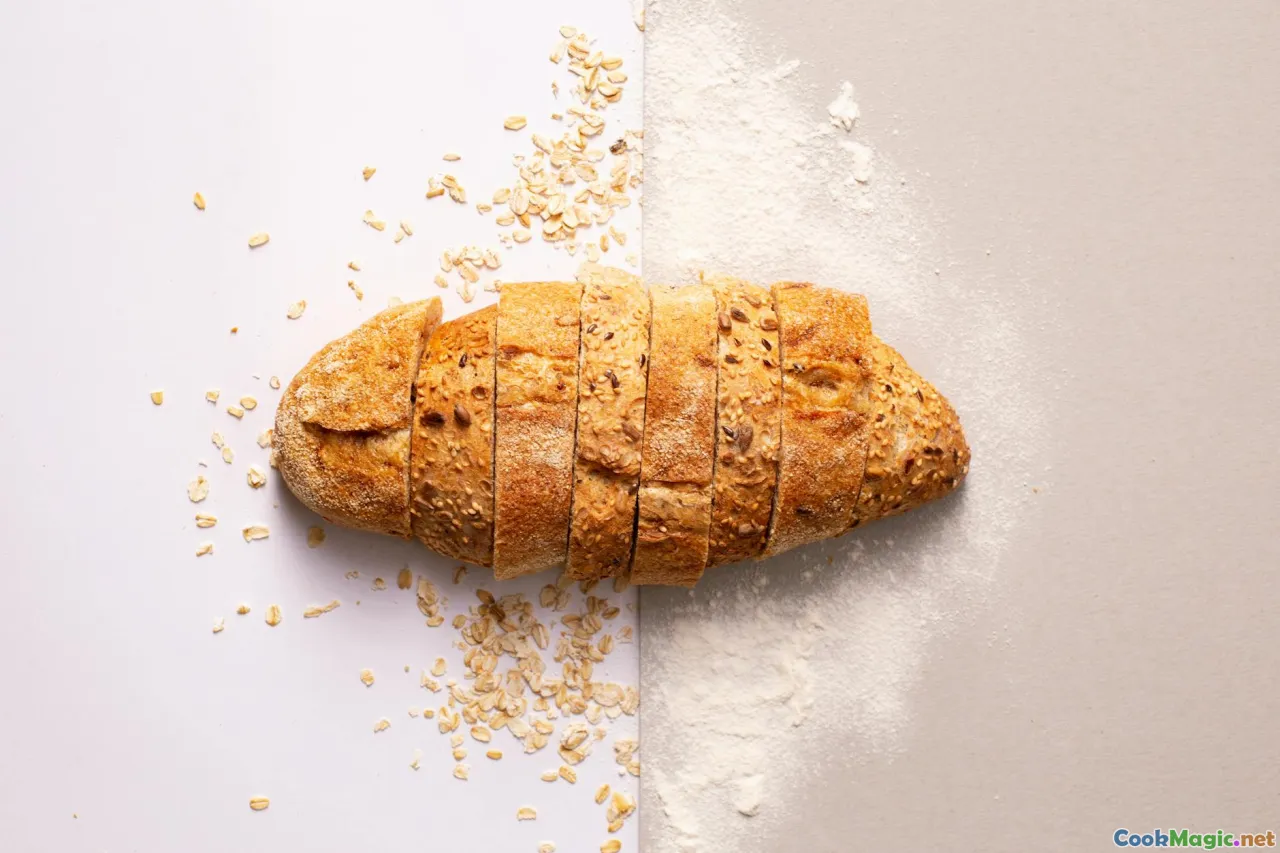
While 100 percent teff is canonical, regional and personal styles often include other grains:
- Sorghum: Adds softness and a mild sweetness; a 20–30 percent addition can make a more elastic crumb on small pans. Ferments eagerly.
- Barley: Contributes malt notes, a subtle biscuit fragrance; watch hydration as barley absorbs less water than teff.
- Wheat: Used in some diaspora kitchens for increased pliability. Even 10–15 percent can significantly change texture.
100% 테프가 표준이지만 지역적·개인적 스타일은 종종 다른 곡물도 포함한다:
- 수수: 부드럽고 은은한 단맛을 더한다; 소량(20–30%) 추가 시 작은 팬에서 더 탄력적인 크럼을 얻을 수 있다. 발효가 빨리 일어난다.
- 보리: 맥아 향과 미묘한 비스킷 향을 더한다; 보리는 테프보다 물을 덜 흡수하므로 수분 관리가 필요하다.
- 밀: 일부 디아스포라 주방에서 더 높은 유연성을 위해 사용된다. 10–15%라도 질감에 큰 변화를 줄 수 있다.
When blending, keep total hydration in the realm of heavy cream and taste carefully. Different grains shift the acidity profile. For a layered tang, try a cool ferment for 36 hours after absit and cook on day four. For brighter flavor, ferment warm and cook sooner.
블렌딩할 때 총 수분 함량은 진한 크림 정도로 유지하고 맛을 세심하게 보라. 서로 다른 곡물은 산도 프로필을 바꾼다. 층층의 산미를 원하면 absit 이후 36시간의 차가운 발효를 시도하고 4일째에 요리하라. 더 밝은 맛을 원하면 따뜻하게 발효시키고 더 빨리 구워라.
The coffee ceremony and injera’s companion rituals

No discussion of injera is complete without coffee. A traditional ceremony begins with green beans roasted in a pan until they pop and go glossy, their smoke scenting the room with caramel and cedar. The beans are ground, then brewed in a jebena—a clay pot with an elegant neck—poured into tiny cups. Incense burns. Popcorn or toasted barley may appear. Injera is often part of the table, a humble, steady presence.
인제라에 대한 논의는 커피 없이는 완성될 수 없다. 전통 의식은 팬에 녹색 콩을 볶아 팝하고 광택이 날 때까지 시작되며, 그 연기가 방 안을 캐러멜과 삼나무 향으로 가득 채운다. 콩은 간 뒤, '제베나(jebena)'라 불리는 목이 우아한 점토 주전자에 끓여져 작은 잔에 따라진다. 향이 피워지고, 팝콘이나 구운 보리가 나타날 수 있다. 인제라는 흔히 식탁의 한 부분으로 자리하며 겸손하고도 흔들림 없는 존재다.
I remember the first time I cradled a cup of buna after a long meal: bright acidity, an echo of red fruit, then chocolate. The injera in my stomach and the coffee in my hand made me feel anchored, like stones arranged in a circle.
오래된 식사 뒤에 부나 컵을 받았던 첫 순간이 생각난다. 밝은 산미, 붉은 과일의 메아리, 그리고 그다음 다크 초콜릿의 풍미. 위의 인제라와 손의 커피가 나를 단단히 붙들어 두는 느낌을 주었고, 마치 원으로 배열된 돌처럼 든든했다.
Leftovers become tomorrow’s delight

Leftover injera is a gift. It reheats beautifully, coming back to life with a minute of steam. It also makes:
- Breakfast firfir: tear injera into strips, sauté in niter kibbeh with berbere and a splash of leftover stew until it drinks up the sauce. Finish with yogurt or a crumble of fresh cheese.
- Crisp chips: brush with oil, sprinkle with berbere and salt, bake at 175°C (350°F) until crisp. Dip into awaze (a berbere-honey-mustard sauce) or hummus.
- Wraps: roll around soft scrambled eggs with collards and a hit of mitmita.
남은 인제라는 선물이다. 증기 한 분이면 다시 살아난다. 또한 아래의 요리를 만든다:
- Breakfast firfir: 인제라를 스트립으로 찢어 니터 키베와 베르게베레, 남은 스튜를 약간 뿌려 소스를 흡수하게 한다. 요구르트나 신선한 치즈를 뿌려 마무리한다.
- 바삭한 칩: 기름을 바르고 베르게베레와 소금을 뿌려 175°C(350°F)에서 바삭해질 때까지 굽는다. Awaze(베르게베레-꿀-머스타드 소스)나 후무스에 찍어 먹는다.
- 랩: 부드러운 스크램블 에그와 케일을 말아 먹는다.
Store cooked injera wrapped in a cloth inside a sealed bag in the fridge for up to 3 days, or freeze for longer. Re-steam to revive.
조리된 인제라는 천으로 싸서 밀봉된 봉지 안에 냉장 보관하면 최대 3일간 보관할 수 있으며, 더 길게 보관하려면 냉동 보관도 가능하다. 다시 찜으로 되살려라.
A cook’s checklist for repeatability

- Weigh flour and water. Consistency is freedom.
- Use filtered water and mind your room temperature.
- Embrace absit for 100 percent teff.
- Stir the batter before each pour.
- Steam decisively; do not hover with the lid half off.
- Rest cooked injera on cloth; do not stack until warm, not hot.
- Keep ersho for next time; you are building a house culture.
반복 가능성을 위한 요리사의 체크리스트
- 밀가루와 물의 무게를 잰다. 일관성이 자유다.
- 여과수를 사용하고 실온에 신경 써라.
- 100% 테프에는 Absit를 적용하라.
- 매번 붓기 전에 반죽을 저어라.
- 찜은 단호하게; 뚜껑을 반쯤 열고 맴돌지 말라.
- 다 구운 인제라는 천 위에 올려 두고 따뜻할 때까지 쌓지 말라.
- 다음 배치를 위해 ersho를 남겨 두라; 당신은 집안의 미생물 문화를 키우고 있다.
Note your observations in a small notebook. It takes only a minute, and your future self will thank you.
작은 노트에 관찰 내용을 적어 두라. 단 1분이면 되고, 미래의 당신이 고마워할 것이다.
Frequently asked curiosities from culinary friends

- Can I ferment in the fridge? Yes, after an initial room-temperature kickstart, a cold ferment produces clean flavors. Plan for 3–5 days and taste daily.
- 냉장고에서 발효할 수 있나? 예, 초기 실온으로 시작한 뒤 차가운 발효는 깔끔한 맛을 만든다. 3–5일 정도를 계획하고 매일 맛보라.
- Can I speed it up? A warm spot will shorten times, but do not overshoot; above 30°C (86°F) can skew the microbial balance. A small spoon of sugar can push activity, but it is rarely necessary with fresh teff.
- 속도를 높일 수 있나? 따뜻한 장소가 시간을 단축시키지만 과도하게 올리지 말라; 30°C(86°F) 이상은 미생물 균형을 왜곡할 수 있다. 설탕 한 스푼이 활성을 촉진할 수 있으나 신선한 테프에는 거의 필요 없다.
- Do I ever flip injera? Traditionally, no. Steam sets the top. If your stove is very weak, you might experiment with a 5–10 second flip, but it often toughens the surface.
- 인제라를 뒤집나요? 전통적으로는 아니다. 증기가 윗면을 굳힌다. 스토브가 매우 약하면 5–10초 뒤집기를 시도할 수 있지만 표면이 질겨지는 경우가 많다.
- Why is my batter gray? Teff darkens as it ferments; gray-tinged batter is not a problem if the aroma is clean and sour. If it smells off—cheesy or rotten—discard and start fresh.
- 반죽이 왜 회색인가요? 테프는 발효되면 어두워진다; 냄새가 깨끗하고 시큼하면 회색 빛의 반죽도 문제되지 않는다. 냄새가 이상하다(치즈 냄새나 상한 냄새)면 버리고 새로 시작하라.
- Can I use a sourdough starter from wheat? You can inoculate teff batter with a small amount; the microbes will transition. The flavor will differ. For a teff-forward taste, grow a dedicated teff starter.
- 밀가루의 사워도우 스타터를 사용할 수 있나요? 아주 소량으로 테프 반죽에 접종할 수 있다; 미생물이 적응한다. 맛은 달라질 것이다. 테프 중심의 맛을 원하면 테프 전용 스타터를 길러라.
Why cook injera at home?

Because it transforms your kitchen into a conversation with a place that has been baking this bread for centuries. Because it teaches patience that is not passive—an attentive patience, a listening. Because when you tear a strip to scoop up misir wot and feel the heat of berbere, you are using the most ancient utensils: your hands and your intuition.
집에서 인제라를 만드는 이유는, 수 세기 동안 이 빵을 굽고 있는 곳과의 대화를 주방으로 옮겨 놓기 때문이다. 이는 수동적이지 않은 인내를 가르쳐 준다—주의 깊은 인내, 그리고 경청이다. 미시르 워트를 떠서 베르베레의 열기를 느끼며 빵을 찢을 때, 당신은 가장 오래된 도구인 손과 직관을 사용하고 있다.
Once, on a winter night far from Ethiopia, I cooked injera for friends. Snow fell outside, muting the world. Inside, the pan hissed, the lid clouded, and the room smelled of warmth. We ate around one big platter—lentils, greens, and a small dish of fiery awaze—talking until the candles shortened. The last piece of injera was stained red and tasted of every dish, every story. When someone tore it, we all laughed and leaned in. The bread had done what it always does: it turned food into a memory we could hold.
언젠가 에티오피아에서 멀리 떨어진 겨울 밤에 친구들을 위해 인제라를 만든 적이 있다. 밖에는 눈이 내려 세상이 잠시 잠잠해졌다. 안은 팬이 지글거리고 뚜껑은 흐려졌으며 방은 따뜻한 냄새로 가득했다. 우리는 큰 접시 하나를 중심으로 렌즈콩, 채소, 매운 아와제를 곁들여 먹으며 촛불이 줄어들 때까지 이야기했다. 남은 마지막 인제라는 붉은 얼룩으로 물들고 모든 요리와 이야기에 대한 맛이 남았다. 누군가 그것을 찢자 우리 모두 웃고 몸을 가까이 기울였다. 빵은 늘 해오던 대로, 음식을 우리가 간직할 수 있는 기억으로 바꿔 놓았다.
If you begin a batch tonight, you are three days from that kind of evening. Start with teff and water, a bowl and a cloth. Let the batter breathe. Learn its exhale. When you pour the first spiral and the eyes open, you will feel it—the quiet click of technique meeting tradition. And then, with steam rising and the bread warm in your hands, you will carry it to the table and see what it was all for.









